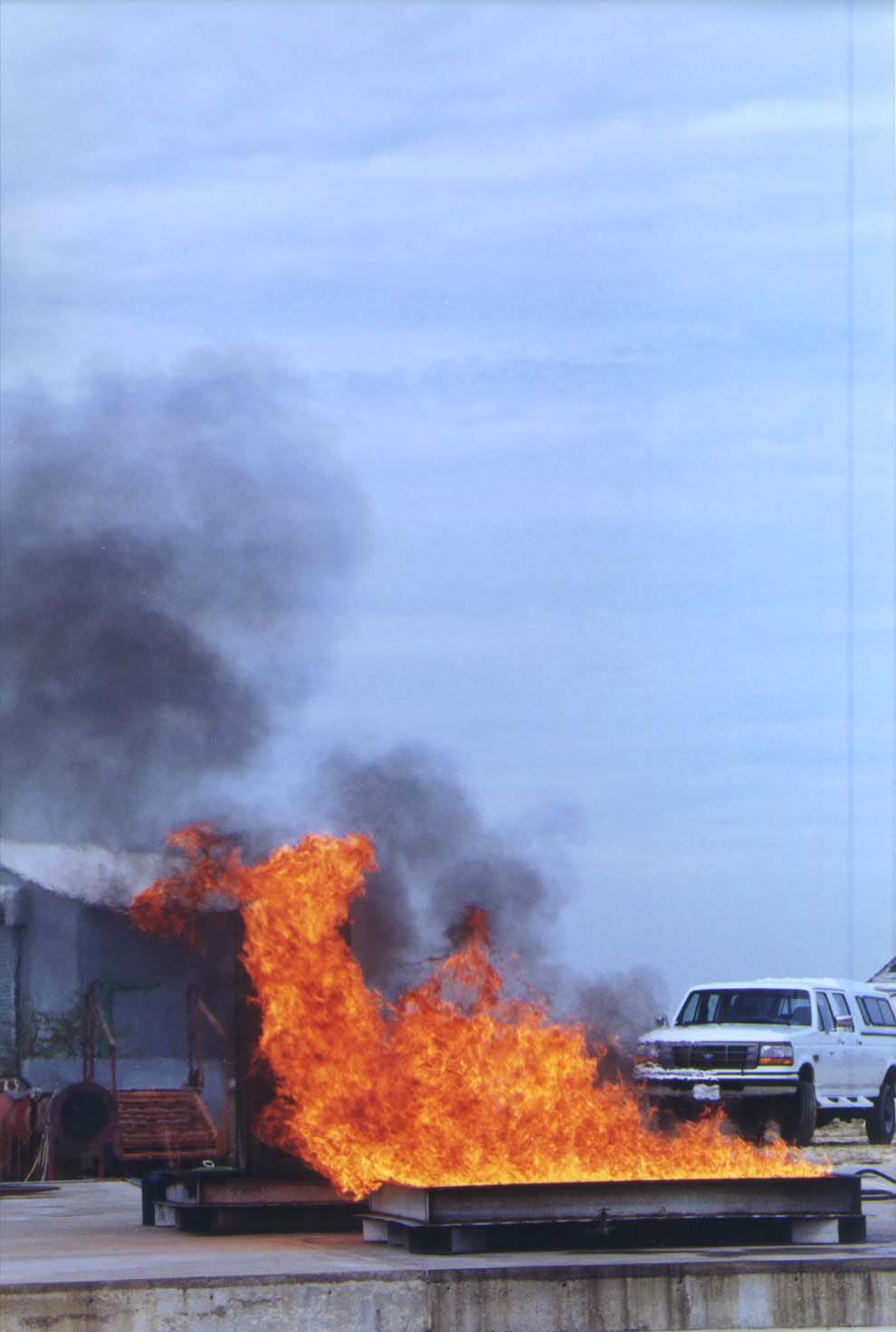Aircraft Rescue and Fire Fighting Training Fuel Comparative Evaluation
FAA Technical Note 01-4 Aircraft Rescue and Fire Fighting Training Fuel Comparative Evaluation
 Environmental regulations are getting more and more stringent, making it difficult for aircraft rescue and fire fighting (ARFF) personnel to get quality fire fighting training. The environmental regulations are increasing the cost of operating liquid hydrocarbon-based training facilities and forcing several training facilities to close or transition to propane. The Federal Aviation Administration William J. Hughes Technical Center's ARFF research program conducted a comparative evaluation of fuels used for training. Three products were tested in comparative burns. One of the existing fuels used in many training facilities is JP8. JP8 was compared to two recently developed products produced specifically for fire fighting training by Exxon Chemical Company and Envirofuel Incorporated. Exxon Chemical Company's product has a trade name of Tekflame™. Envirofuel Incorporated's product has a trade name of E III™.
Environmental regulations are getting more and more stringent, making it difficult for aircraft rescue and fire fighting (ARFF) personnel to get quality fire fighting training. The environmental regulations are increasing the cost of operating liquid hydrocarbon-based training facilities and forcing several training facilities to close or transition to propane. The Federal Aviation Administration William J. Hughes Technical Center's ARFF research program conducted a comparative evaluation of fuels used for training. Three products were tested in comparative burns. One of the existing fuels used in many training facilities is JP8. JP8 was compared to two recently developed products produced specifically for fire fighting training by Exxon Chemical Company and Envirofuel Incorporated. Exxon Chemical Company's product has a trade name of Tekflame™. Envirofuel Incorporated's product has a trade name of E III™.
Two types of burn tests were conducted on each fuel; pan fire, and running fuel fire. Pan fire tests were conducted in a 60 sq. ft. test pan. Running fuel tests were conducted in the three-dimensional cascade running fuel test apparatus. Quantities of fuel burned varied between five and ten gallons per test depending on the scenario.
Three lab tests were conducted on each fuel; smoke density, total petroleum hydrocarbon (TPH) and volatile organics (VO's). The smoke density test was conducted in a test cell located in the cargo hold of a Boeing 707 fire test aircraft at the Technical Center. The TPH and VO tests were conducted by an environmental lab outside the agency.
Both of the new training products showed major improvements in reducing the production of environmentally harmful by-products. Data indicate that the Exxon product produced the least amount of smoke output and contaminated water runoff.
Mr. Keith Bagot
FAA Technical Center
ARFF Research Program
Airport R&D, Bldg. 296
Atlantic City International Airport,
New Jersey, 08405
Contact Project Lead: Keith Bagot, ATO-P (formerly AAR-411)
Last Update: 05/18/09